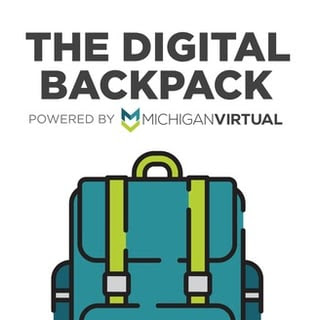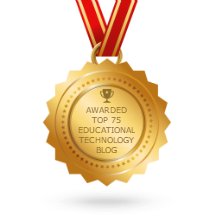A newsletter from the folks at the MVLRI.
Spring 2024 Newsletter
We hope this message finds you well and thriving in your endeavors to enhance K-12 digital education. As part of our commitment to bring you the most relevant and impactful resources in the field of online learning, we are thrilled to announce a new feature with our quarterly newsletter!
Starting soon, we will be highlighting key publications and activities from the Michigan Virtual Learning Research Institute (MVLRI) with newsletter emails inbetween our regular quarterly newsletters. This initiative is aimed at providing you with a curated selection of the latest research findings, innovative teaching strategies, and real-world insights into online and blended learning environments.
Whether you’re an educator seeking to refine your online teaching skills, a researcher looking for the latest studies in virtual education, or an advocate dedicated to improving K-12 learning environments, these highlights will provide valuable insights to support your goals.
We believe that by highlighting this work alongside the resources of the clearinghouse, we can foster a more informed, innovative, and connected community of online learning professionals.
Stay tuned for our upcoming newsletters, and get ready to dive deep into the world of online and blended learning research!
Out of Order, Out of Reach: Navigating Assignment Sequences for STEM Success
Kelly Cuccolo & Kristen DeBruler
Research shows that pacing has an important relationship with online course performance; however, most work has focused on the timing—not the order—of students’ assignment submissions. The current study examined the relationship between the order of students’ assignments and their final course grades in online STEM classes. Using course pacing guides as a benchmark, students’ assignment submissions were categorized as either “in sequence” or “out of sequence.” Then, students were categorized as either moving through their courses “in sequence” or “out of sequence.” Most students were categorized as moving “out of sequence” (~93%) and submitted around 38% of their assignments out of order. As such, going out of sequence was common among students, but done somewhat sparingly within the courses themselves. While this “out of sequence” behavior was common, it was not necessarily advantageous for students’ final grades.
On average, students who completely adhered to the pacing guide had final grades 9.5 points higher than students who deviated from the pacing guide at least once. A small but statistically significant negative correlation was observed between the proportion of assignments submitted out of order, the extent to which a student submitted an assignment out of order, and final grades. In other words, as students become increasingly out of order, final grades decrease. Taken together, pacing continues to represent a student behavior that may have important implications for course performance. Instructors and mentors should continue to monitor student pacing, and communication about course progression is encouraged. Future work should focus on examining student submission patterns from multiple perspectives to better understand their relationship to achievement.
The “New Normal”: Teacher Reflections Two Years After the Transition to Emergency Remote Teaching During COVID-19
Cordelia Zinskie, Lucas Jensen, & Elizabeth Downs
K–12 teachers faced a multitude of challenges during the transition to emergency remote teaching at the onset of the COVID-19 pandemic. Given that over two years have passed since the onset of the pandemic and the accompanying shift to emergency remote teaching, it is important to assess how K–12 teachers feel regarding online teaching and whether their schools/districts have made any changes and/or preparations to better support future needed shifts to virtual instruction. The current study presents analyses of journal reflections written by in-service teachers enrolled in a field experience course required as part of a graduate-level online teaching and learning endorsement. Results show that there has been a positive shift in attitude with participants noting increased comfort with online teaching. Participants also noted that schools/districts have increased support (e.g., new technology tools, professional development) for teachers and students that will facilitate any future needed shifts to online teaching.
High School Students’ and Teachers’ Experiences of Online Learning using the Community of Inquiry Framework
Keryn Pratt & Kwok-Wing Lai
The Community of Inquiry framework (Garrison et al., 2000, 2010) is well researched within the higher education field but is only beginning to be studied within a K-12 context. In this study, all high school online learners and teachers were sent a survey to ask about their online learning and teaching experiences, framed around Garrison et al.’s framework. Two hundred and nine students and 53 teachers responded to online surveys, while 43 students and 21 teachers also participated in interviews. Findings showed that while the cognitive, teaching, and social presence elements of the Community of Inquiry framework were relevant to this level, fewer students reported experiencing these elements than teachers reported facilitating them. While the Community of Inquiry framework appears promising for high school online learning courses, further research is needed to investigate what is happening and why.
Advanced Placement (AP®) courses in high school allow students to take advanced courses with the possibility of earning college credit. The number of public school students taking AP courses in Michigan has increased over the past few years, with 56,885 public school students taking an AP course in 2023, an increase of 8.9% compared to 2022 (Ackley, 2023). Michigan Virtual offers 22 two-semester AP online courses for high school students across Michigan who may, for example, not have the course available to them in a brick-and-mortar school or may prefer an online format. Michigan Virtual administrators recognize the importance of preparing students for the AP exam because the AP exam score, rather than the course grade, determines whether students earn college credit for their coursework. It further serves as an indicator to colleges about students’ mastery of the subject matter.
Universal design in online education: A systematic review
Mohan Yanga, Mohammad Shams Ud Duha, Breanne A. Kirsch, Noah Glaser, Helen Crompton, & Tian Luo
As online learners are increasingly diverse, making online learning more inclusive becomes an urgent need. Universal design has been perceived as a viable framework to reach the widest possible range of learners. However, applying universal design to online education has been a challenge to instructors due to different barriers. It is also unclear what evidence-based strategies can be infused into online education. In this systematic review, we selected and analyzed relevant studies and synthesized their designs and findings to explore the trends, strategies, impacts, challenges, and instructors’ and students’ attitudes toward applying universal design in online environments. We discuss implications for research and practice.
Subscribe to the Digital Backpack for more regular updates!
Want more frequent updates? Our research team regularly publishes blog articles on online and blended learning. By subscribing to the Digital Backpack blog, you’ll receive a weekly digest of Michigan Virtual’s latest articles sent to your inbox every Thursday.
Explore over 1,000 publications in our Research Clearinghouse
Though we only feature four or five resources per newsletter, we encourage you to visit our Research Clearinghouse to search for citations that may be of use to you. The Clearinghouse currently houses over 1,000 citations in the field of online and blended learning, and over 100 new citations are added each year.
If you have any questions about how to navigate this resource, please check out our “Getting Started Guide.”
What else do you want to see? Please feel free to offer any feedback on the Clearinghouse or any other MVLRI initiatives by emailing us at mvlri@michiganvirtual.org. Thank you!
Michigan Virtual, 920 Municipal Way, Lansing, Michigan 48917























 12 Unique Blogs Are Written By Professors
12 Unique Blogs Are Written By Professors